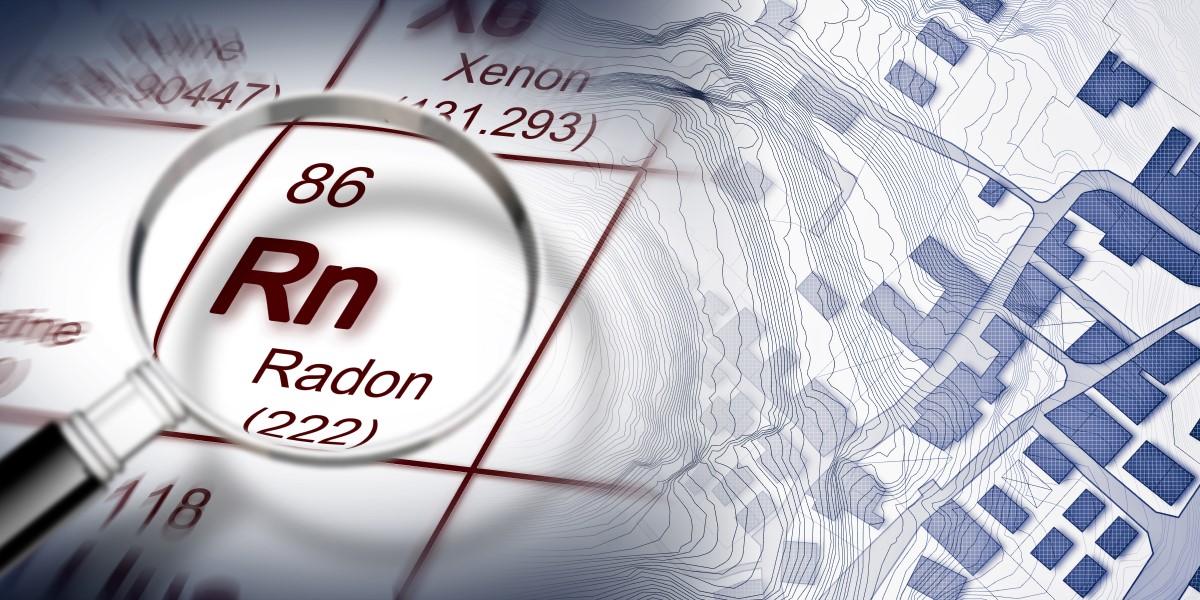The critical need for radon testing: A wake-up call for business owners
In a landmark case earlier last year, a private boarding school in Somerset faced a substantial fine for exposing pupils and staff to dangerously high levels of radon gas. Is your real estate storing up similar problems for your organisation?
In July 2023, Kingswood School in Somerset was fined £50,000 for exposing pupils and workers to up to 14 times the legal limit of radon. The court found that the school, although aware of the radon issue since 2007, had failed to carry out adequate monitoring or maintain control measures effectively between 2010 and 2018.
This case serves as a stark reminder of the often-overlooked danger of radon gas in our workplaces and the very real legal obligations of all employers to ensure a safe environment.
What is radon?
Radon is a naturally occurring radioactive gas, colourless and odourless, making it hard to detect without proper testing. It emanates from rocks and soil and can accumulate in buildings, especially in lower floors and basements.
The radon health risk - a silent killer
Prolonged exposure to high levels of radon increases the risk of lung cancer, making it a significant health hazard.
Where is the risk of dangerous levels of radon most acute in the UK?
The risk of heightened radon levels varies across the UK, with certain areas being more prone to spikes in readings due to geology. Luckily, the government website provides detailed online maps indicating radon-affected areas, acting as a crucial resource for employers and homeowners alike to assess their potential risk.
What constitutes a high level of radon gas?
In the United Kingdom, the Health and Safety Executive (HSE) has set an action level of 300 Bq/m³ for radon concentration in the workplace. This means that if radon gas levels are found to be at or above these thresholds, steps must be taken to contain the threat.
Does everyone have a responsibility to monitor radon risk?
Absolutely. The Health and Safety Executive (HSE) mandates that all employers, including educational institutions, should assess and manage the risk of radon in their workplaces. Like monitoring for Asbestos exposure, this responsibility is part of a broader commitment to ensuring the health and safety of all employees and others who may use their buildings.
What are my legal responsibilities for monitoring the risk of radon exposure?
Under the Ionising Radiations Regulations 2017 (IRR17), employers are legally required to assess the risk of radon exposure in their workplaces. If your business is located in a designated radon-affected area, or if you have reason to believe that radon levels could be high, you must conduct a radon risk assessment and take appropriate action to reduce exposure.
What’s the best way to monitor radon levels?
For multi-site businesses covering large areas, the most efficient and effective way to monitor radon levels is through professional testing. This can be done using radon test kits that measure the concentration of radon.
A professional air quality firm can manage installation and collation of data, and provide full reporting around required next steps. If high levels are detected, they may recommend steps such as improving ventilation or installing radon sump systems.
Beyond radon test kits - towards a holistic approach to air quality monitoring
But Tony De Sousa, an air quality specialist from Hydro-X, recommends taking a more holistic approach to monitoring radon levels in the workplace.
He suggests fitting connected devices such as those available from ‘Hydro-X Air', which allow for continuous monitoring of air quality from multiple locations. They can track and report on important aspects of indoor air quality, such as carbon dioxide levels, temperature, volatile organic compounds (VOCs), air pressure, humidity and radon gas, giving you a complete picture of your air quality challenges.
Tony advises,
"For a comprehensive assessment of the workplace environment, going beyond occasional checks typical of traditional radon testing methods, these systems are invaluable. They provide real-time data and alerts, allowing for immediate responses to any changes in levels."
This modern approach to radon testing is not only about meeting compliance standards but also about ensuring long-term safety for employees. Taking and demonstrating a proactive approach to radon risk mitigation, will keep your workers safe and protect you from future claims.
Don’t expose your business to the risk of radon exposure
The case of the Somerset school is a cautionary tale for all business owners.
After the court case, Stewart Robertson, HSE Principal Specialist Inspector, emphasised to reporters that the HSE takes non-compliance with radon regulations extremely seriously:
“We will not hesitate to take action against companies, including schools, who do not do all that they should to keep people safe. Every workplace needs to consider radon as a risk to its employees and others.
Radon risk: Three steps for proactive mitigation
In line with government guidelines, Tony De Sousa advises businesses to follow three key steps for radon mitigation:
1. Assess
Tony emphasises the importance of businesses undertaking risk assessments, particularly where real estate is complex and spread across multiple locations. Companies should commission Radon Risk Reports from suitably qualified professionals and retain these as documented proof of compliance.
2. Measure
After assessing the risk, the next step is to measure radon levels. This is typically done using radon testing units that are placed in the workplace for a specific period. For a more holistic approach, work with an air quality specialist to create a bespoke, ongoing testing programme.
Note for properties with basements: according to government guidelines all occupied basements, those used for more than 50 hours per year, should be monitored regardless of radon potential.
3. Act
If initial results indicate high levels of radon, businesses must take remedial actions. Tony suggests that the general solution for high levels of radon is to improve ventilation, either by forcing air into the building to push the radon gases out or by ventilating under the foundations to disperse the gas.
But he also points out;
“If you discover radon in your premises, you need to appoint a radiation protection advisor. There's a register of these consultants on the government website and they will help define an appropriate and compliant radon action plan.”
Conclusion
Whether you opt for handling your own radon gas testing or decide to use a professional radon testing and mitigation service, the key is to take action.
Discuss your requirements with your Hydro-X Air account manager, contact us at info@hydro-x.co.uk or call us on 01909 565 133.
Topics: Air Quality

Written by Jon Greaves
Jon has progressively worked through operational roles, account management, technical management, and senior management roles over the last 16 years within one of the group companies before moving into the role of Water and Air Managing Director. Jon has experience across multiple sectors of water and air compliance, including district energy networks; data centres; healthcare; food and beverage and facilities management. Jon acted as a corresponding steering committee member on CIBSE CP1 – Heat Networks Code of Practice for the UK released in 2020.


